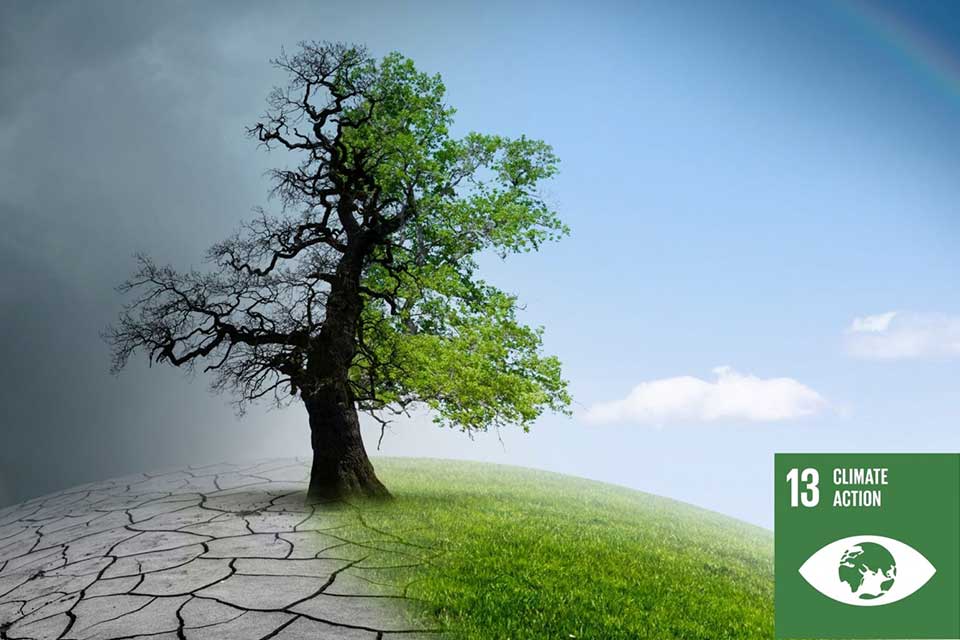A Beautiful Disaster
Welcome to Bangladesh, where the rivers are as rich as our cultural heritage, and the resilience
of our people is as strong as our monsoon rains! But amid the vibrant festivities and
mouth-watering street food, our beloved country is facing a climate crisis that feels less like a
fun fair and more like a rollercoaster ride we never signed up for. Situated in South Asia,
Bangladesh is on the front lines of climate change, wrestling with rising sea levels, extreme
weather events, and unpredictable rainfall patterns. Join me on this journey as we navigate the
challenges posed by climate change in Bangladesh, explore its impacts, and highlight the efforts
being made to adapt—with a sprinkle of humor along the way!
The Stormy Seas of Vulnerability
1. Geographical Challenges: Living on the Edge
Imagine a country where about 80% of the land sits less than five meters above sea level.
That’s Bangladesh for you! We’re practically living on the edge—quite literally! The Bangladesh
Climate Change Strategy and Action Plan (BCCSAP) warns that a one-meter rise in sea levels
could displace around 20 million of our fellow citizens by 2050. Just picture the real estate
crisis—developers might start selling properties in the Himalayas!
2. Extreme Weather Events: Nature’s Bad Breakup
If you think your weather app is giving you a hard time, try living in Bangladesh. We’ve seen a
dramatic uptick in extreme weather events. The Bangladesh Meteorological Department has
recorded more cyclones than ever before. Cyclone Sidr in 2007 and Cyclone Aila in 2009 left
devastation in their wake, like nature’s way of saying “I’m done!” In May 2020, Cyclone Amphan
swept in, affecting over 2.4 million people and costing an estimated $13.6 billion in damages.
That’s a storm of heartbreak, indeed!
Harvesting Trouble: Agriculture and Food Security
Agriculture is the backbone of Bangladesh’s economy, employing nearly 40% of our workforce
and providing food for the masses. However, climate change is making our farmers’ lives a real
headache.
1. Shifting Weather Patterns: The Plot Twist
The weather here has become as unpredictable as a family wedding. Erratic rainfall patterns
lead to crop failures, with the 2017-2018 drought reducing rice production by about 15%. That’s
a lot of missing biryani! Given that rice is a staple food, any drop in production can spell disaster
for our food security.
2. Soil Salinity: A Salty Situation
Our coastal areas are facing increased salinity, or too much salt in the soil. Rising sea levels
and storm surges are making it difficult for farmers to cultivate crops. A 2018 study in the
Journal of Environmental Management reported that 20% of coastal land is affected by salinity.
Unless we plan on creating a giant salt shaker for our dishes, this is a significant problem!
3. Food Security Threats: The Hunger Games
With agriculture under siege, food security is at risk. The World Food Programme (WFP) reports
that around 4.6 million people in Bangladesh are currently undernourished, and climate change
could push that number even higher. If we run out of rice, we might have to barter with potatoes!
The Health Crisis: When the Weather Worsens
The health impacts of climate change in Bangladesh are no laughing matter. Rising
temperatures and extreme weather contribute to a surge in diseases.
1. Waterborne Diseases: The Germs Crash the Party
Floods lead to contaminated water, creating the perfect environment for waterborne diseases
like cholera and diarrhea. A study in The Lancet found a strong link between flooding and
cholera outbreaks. It seems that when the rains come, so do the germs—like uninvited guests
at a family gathering!
2. Vector-Borne Diseases: Mosquito Mayhem
The changing climate is also helping mosquitoes throw a party in our backyards. Warmer
temperatures and erratic rainfall can expand the range of malaria and dengue fever. In a country
already battling enough mosquitoes, the last thing we need is for them to start having “buzz”
parties!
Resilience in Action: Adapting to Change
Despite these challenges, we Bangladeshis are rolling up our sleeves and getting to work,
proving that when the going gets tough, the tough get creative.
1. Community-Based Adaptation Initiatives: Local Heroes Unite
Local communities are taking charge, developing innovative solutions to combat climate
impacts. Programs promoting the construction of climate-resilient infrastructure—like elevated
homes and flood shelters—are emerging. The “Safe Shelter” program has built over 5,000multipurpose cyclone shelters across coastal regions. It’s like building luxury homes, but with a
view of the rising tides!
2. Sustainable Agricultural Practices: The Green Revolution
Farmers are learning to adapt with climate-resilient crop varieties. The Bangladesh Agricultural
Research Institute (BARI) has developed flood-resistant rice varieties that can withstand
submergence. So, while climate change may be trying to pull the rug out from under them,
farmers are planting roots that can withstand a little water!
3. National Policies and International Cooperation: A United Front
The Bangladeshi government is proactive with the BCCSAP, focusing on disaster risk reduction,
ecosystem restoration, and sustainable livelihoods. We’re not just asking for help; we’re actively
seeking funding and technical support from developed countries. Think of it as a climate change
“Go Fund Me” for our nation!
4. Climate-Resilient Infrastructure: Building for Tomorrow
Investments in climate-resilient infrastructure are crucial. The government is enhancing drainage
systems in urban areas and reinforcing coastal embankments. With support from the World
Bank and other partners, projects like the “Coastal Embankment Improvement Project” aim to
keep the waters at bay—because nobody wants to swim to work!
Community Resilience and Empowerment: Strength in Unity
Empowering local communities is essential for building resilience to climate change. Grassroots
organizations are stepping up to help.
1. Grassroots Movements: The Power of People
Organizations such as the Bangladesh Red Crescent Society and BRAC are leading the
charge, educating communities about climate impacts and adaptation strategies. They provide
training on disaster preparedness and sustainable agricultural practices, proving that knowledge
is as valuable as gold—especially when floodwaters rise!
2. Women’s Empowerment: Leading the Charge
Women play a crucial role in resilience-building initiatives. Empowering women through
education and resources enables them to lead community adaptation efforts. Programs
supporting women farmers have shown promising results in enhancing agricultural productivity.
When women rise, communities thrive, proving that behind every resilient community is a group
of empowered women ready to take on the world!
The Road Ahead
Climate change poses a daunting challenge for Bangladesh, but the resilience and adaptability
of our people shine through like a beacon of hope. Our unique geographical challenges and
socio-economic conditions amplify the impacts of climate change, making proactive strategies
and community involvement essential.
As the global community confronts the pressing issues of climate change, Bangladesh stands
as a reminder that resilience is not just a local issue—it’s a global imperative. By investing in
adaptation strategies and empowering communities, we are not just weathering the storm; we
are learning to dance in the rain.
So, let’s raise a toast (with fresh water, of course) to the people of Bangladesh, who continue to
inspire us all with their determination and creativity in the face of adversity. After all, if we can
build shelters for cyclones, surely we can build a future worth fighting for!







